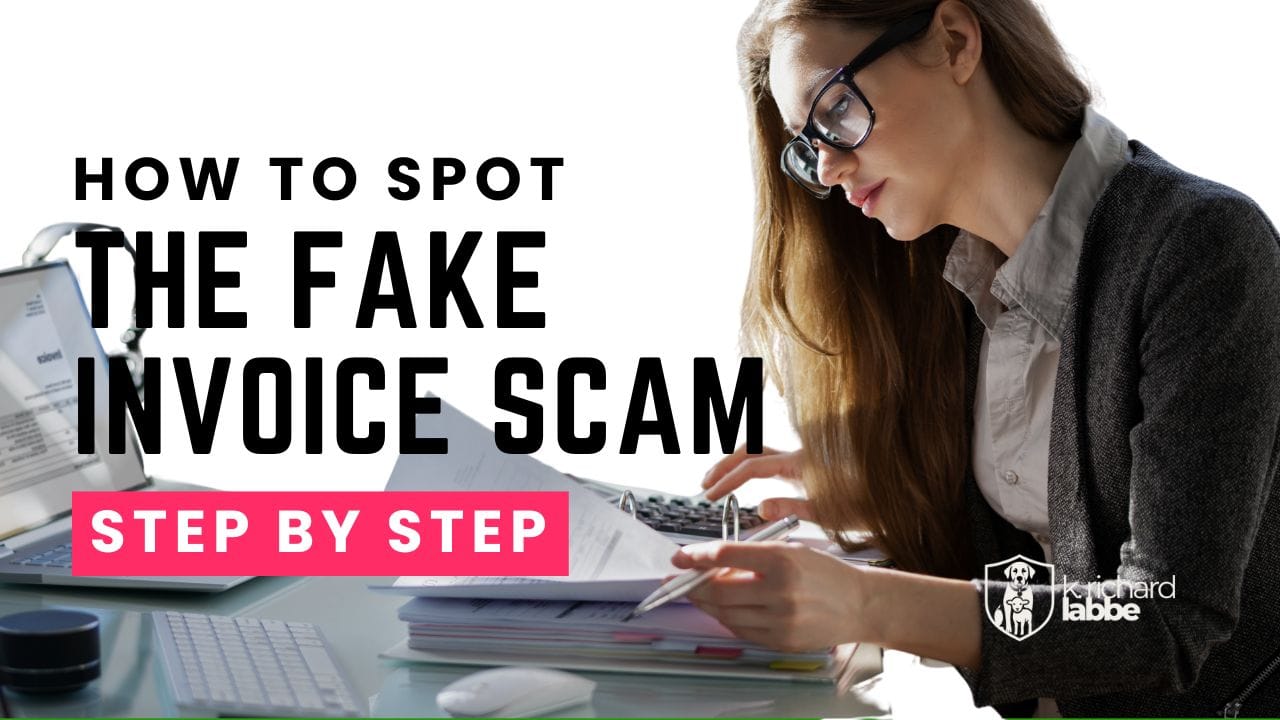Fake Invoice Scams: How to Spot Them Before You Pay the Price
Welcome to the fake invoice scam. Let’s unpack how this scam works, who’s being targeted, and how you can protect yourself and others—before a false bill turns into real regret.

You didn’t order that toner.
You never subscribed to that service.
And yet, there it is—a bill on your desk or a “payment due” notice in your inbox—insisting you owe hundreds of dollars.
Welcome to one of the oldest tricks in the book with a new digital twist.
Fake invoice scams are quietly siphoning money from households, churches, and small businesses—especially when no one’s expecting it.
Let’s walk through how this scam works, who’s being targeted, and how you can protect yourself or someone you care about—before a false bill turns into real regret.
How It Works
At its core, a fake invoice scam is pretty simple: Someone sends you a bill for something you never bought, hoping you’ll just pay it.
Sometimes it arrives by mail—an official-looking invoice with a vague line item like “business services” or “domain renewal.” Other times, it’s an email with a PDF attachment or a QR code, urgently warning you to act fast before your service is cut off or your subscription renews.
The amounts are just low enough to seem plausible. A $118 toner refill. A $269 domain name. A $312 charge for antivirus software.
In a busy home or office, those numbers slip through the cracks. That’s the plan.
Where It Shows Up
Fake invoice scams don’t all look alike. Some show up in envelopes, others in inboxes. But they share one goal: catching you off guard. A few of the most common versions include:
- Office Supply Invoices — Think toner cartridges or IT services no one ordered. These often hit churches, schools, and nonprofits—places where the person approving the bills may not be the one who placed the order.
- Domain or Hosting “Renewals” — A threatening notice warns your website domain is about to expire… unless you pay immediately. The company is fake, or charging triple the going rate.
- Subscription Scams — You’re told your Norton, McAfee, or Geek Squad plan will renew unless you act. But clicking “cancel” opens the door to refund scams or malware.
- Shipping Charges — A mysterious package has been “shipped” and there’s a charge waiting. Invoices like this prey on companies or households that regularly receive deliveries.
- Nonprofit Service Fees — Churches and ministries may be sent invoices for donation listing services or post-event processing fees, often timed right after Christmas or Easter giving.
And Yes—This Happens with Medical Bills Too
More and more people are reporting medical bills for treatments they never received or doctors they’ve never seen.
It might be an outright scam. Or it could be a mix-up—like an old claim getting sent again, or a service your insurance already covered.
Either way, the result is the same: stress, confusion, and the temptation to just pay it to make it go away.
If you’re a caregiver, someone recently hospitalized, or navigating insurance changes, double-check every medical bill. And don’t be afraid to call your provider or insurer directly. You're not being difficult—you're being wise.
Why These Scams Work
Scammers count on two things: busyness and trust. In most homes and offices, the person handling bills assumes that what’s in front of them is legitimate—especially if it looks official or comes at a hectic time.
They also rely on urgency. Phrases like “FINAL NOTICE,” “ACT IMMEDIATELY,” or “ACCOUNT SUSPENDED” are designed to make you panic just enough to stop checking and start paying.
And when multiple people are involved—an admin, a treasurer, a family caregiver—there’s often just enough confusion to slip through.
Who’s Most at Risk?
- Small business owners and pastors who wear too many hats
- Churches and nonprofits with rotating volunteers or part-time bookkeepers
- Seniors and caregivers juggling multiple bills or medical decisions
- Anyone overwhelmed by email, mail, or paperwork
Even cautious, tech-savvy folks can get fooled by a routine-looking invoice with a recognizable name.
How to Catch a Fake Invoice Before It Catches You
Here’s what to check before you reach for your checkbook—or click “Pay”:
- Does the company name ring a bell? If not, start there.
- Are the service details oddly vague?
- Is the invoice trying to rush you?
- Does it use odd payment methods (like Zelle or QR codes)?
- Is the return address or phone number incomplete or suspicious?
- Do they reference something real (like your antivirus software)… but with wrong details?
If you feel even a little unsure, stop. Take a breath. Then check your records.
What to Do If You Get One
If a questionable invoice shows up—digital or physical—here’s what to do:
- Don’t pay it immediately. Pause and verify.
- Call, don’t click. Look up the company online and contact them using a number you find—not the one they gave you.
- Review your own records. If it’s medical, cross-check with your provider and insurer.
- Report the scam. Go to reportfraud.ftc.gov or contact your state’s attorney general.
- Tell someone else. Forward this article to your treasurer, admin, bookkeeper—or just someone who might need a reminder that false bills are everywhere.
Let’s help each other stay scam smart and financially faithful—one invoice at a time.
Stay safe. Be ready. Online and off.
Every effort has been made to ensure the accuracy and reliability of the information presented in this material. However, Labbe Media, LLC does not assume liability for any errors, omissions, or discrepancies. The content is provided for informational and educational purposes only and should not be considered professional advice. Viewers are encouraged to verify any information before making decisions or taking actions based on it.
